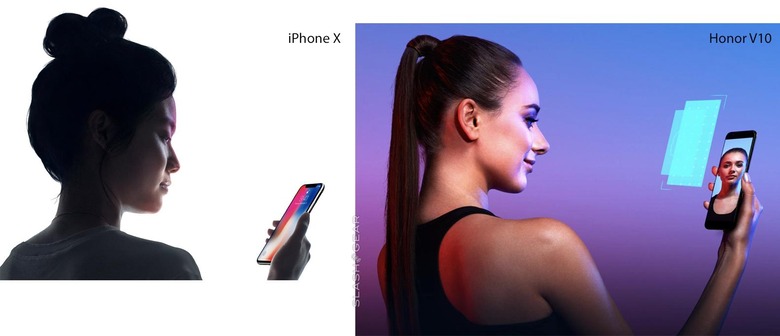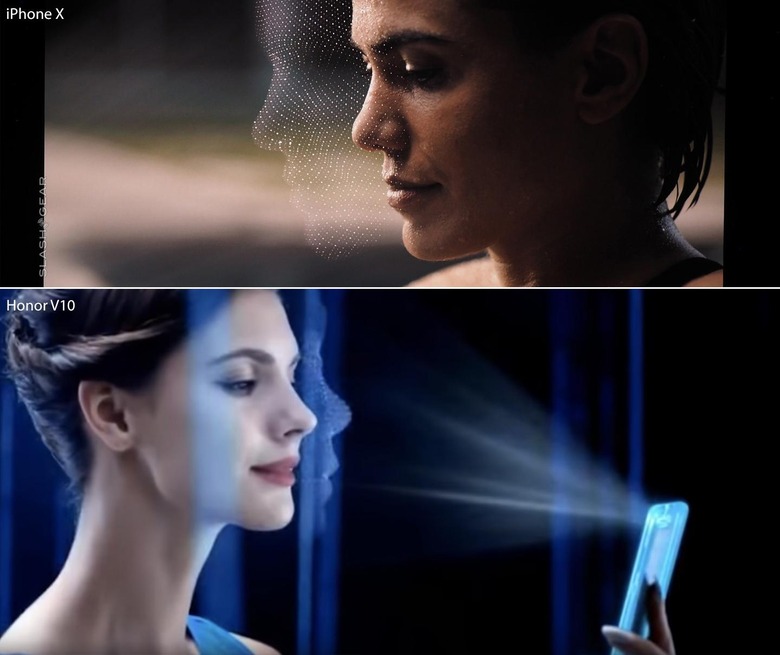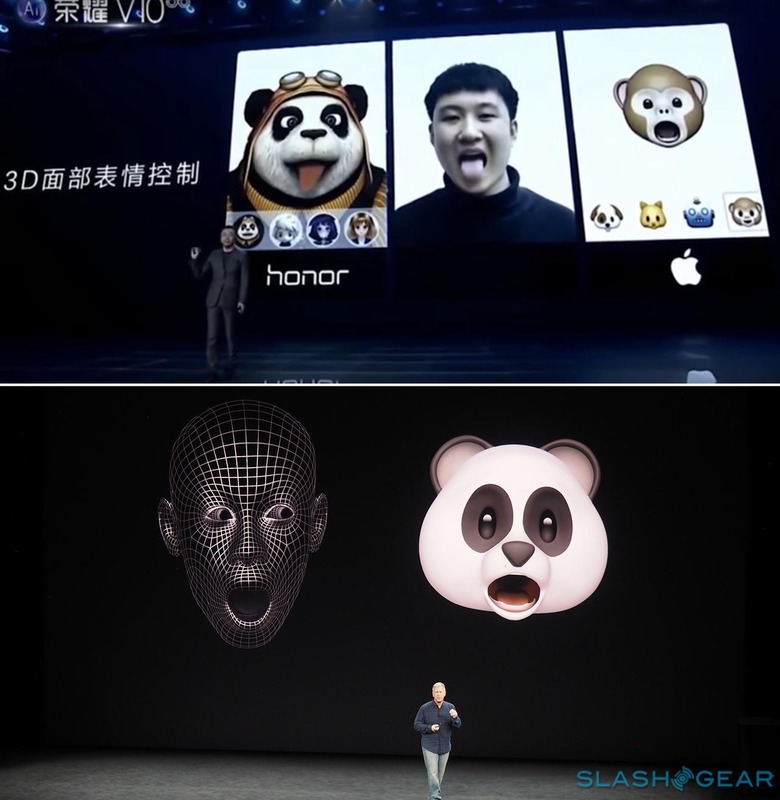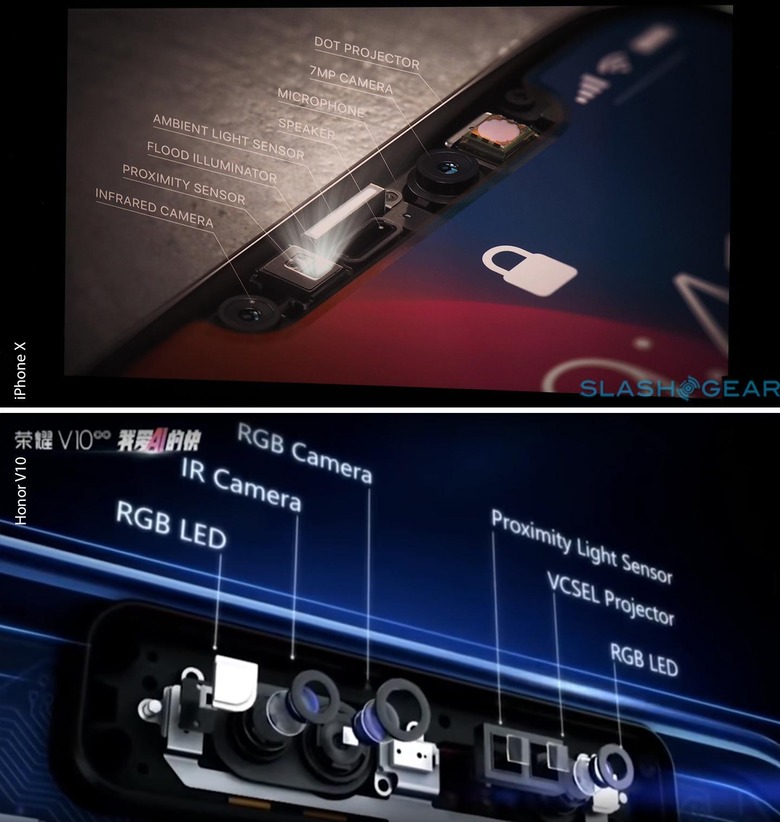iPhone X Vs Honor V10: Graphic Copycat Syndrome In 6 Parts
Today we're having a brief look at a series of images which capture the essence of the iPhone X and the Honor V10. More specifically, these images show the extreme similarities between the public presentations of both devices. The iPhone X was revealed by Apple back in September of 2017, and the Honor V10 was revealed by Huawei at the tail end of November 2019 for China, then again at a separate event in London on December 5th. NOTE: This is not a comparison of specs or performance. This is a comparison of how Apple and Huawei have chosen to represent their phones.
Before we go any further, I should mention that it's extremely clear Huawei's Honor brand is aiming directly for Apple's business here with iPhone X. They mentioned iPhone X several times in their presentation and even go so far as to use some Apple imagery IN their presentation (see: #5 below.) It's not as if Huawei's trying to hide the fact that they're trying to compete with Apple. The question is: how far should the Honor brand be going to replicate Apple's presentation and subsequent graphic design?
1. Hold phone, scan face
The first set of images here is another view of what's shown at the head of this article. Here we see an image from the Honor View10 webpage up as of December 7th, 2017, near an image from the Apple website for iPhone X. After this first image you'll see something very similar.

2. Represent scan with grid of dots
Apple features two images of the same woman on their iPhone X page presenting their device's newest 3D-scanning technology. They do so with a grid of dots floating above the womans face. Huawei also opts for the grid, and they do so more than once. The image below and to the left is from Apple's iPhone X webpage, and to the right is an image captured from Huawei's Honor V10 presentation.

3. Face scan floats just in front of face
The images below this paragraph are also both taken from presentations of the phones they represent. Both device brands show women getting their face scanned by their respective phones. Both scans are represented with a 3D replication of the womans face floating above the actual face of said woman.

4. Animoji and a Tongue
The folks representing Honor do not say they've got Animojis in their smartphone. They DO, however, literally use Apple's Animoji interface to compare their technology to that of Apple's in the iPhone X. The idea here is to show how similar the two are – and to differentiate the two by including tongue tracking.

5. Present front cameras/sensors with elements labeled
Both presentations of devices show the front top of their phone in x-ray vision. Both indicate each of the individual elements in their array with titles and lines pointing to each element. While these two devices do not have exactly the same set of elements, their presentations could easily fool the average user – the user who doesn't care what each individual camera or scanner does anyway.

6. Depict back-facing cameras with exploded elements view
This system of showing one's smartphone camera is not new. Nor is it relegated to just Apple and Honor/Huawei. But as far as I've been able to find, it was Apple that thought to do it like this, with their smartphone, first.

Presentations in Video
Huawei's presentation of the Honor V10 (aka Honor View 10) can be seen in full below. This video shows the London presentation in English. The earlier presentation (from late November) is almost identical – at least in the imagery presented. Most of the event images above can be found near the end of this presentation.
Next is the iPhone X portion of Apple's September 2017 event. The first part of this presentation focused on a variety of other products, like a 4K Apple TV and iPhone 8 and 8 Plus.
Let us know what you think!
